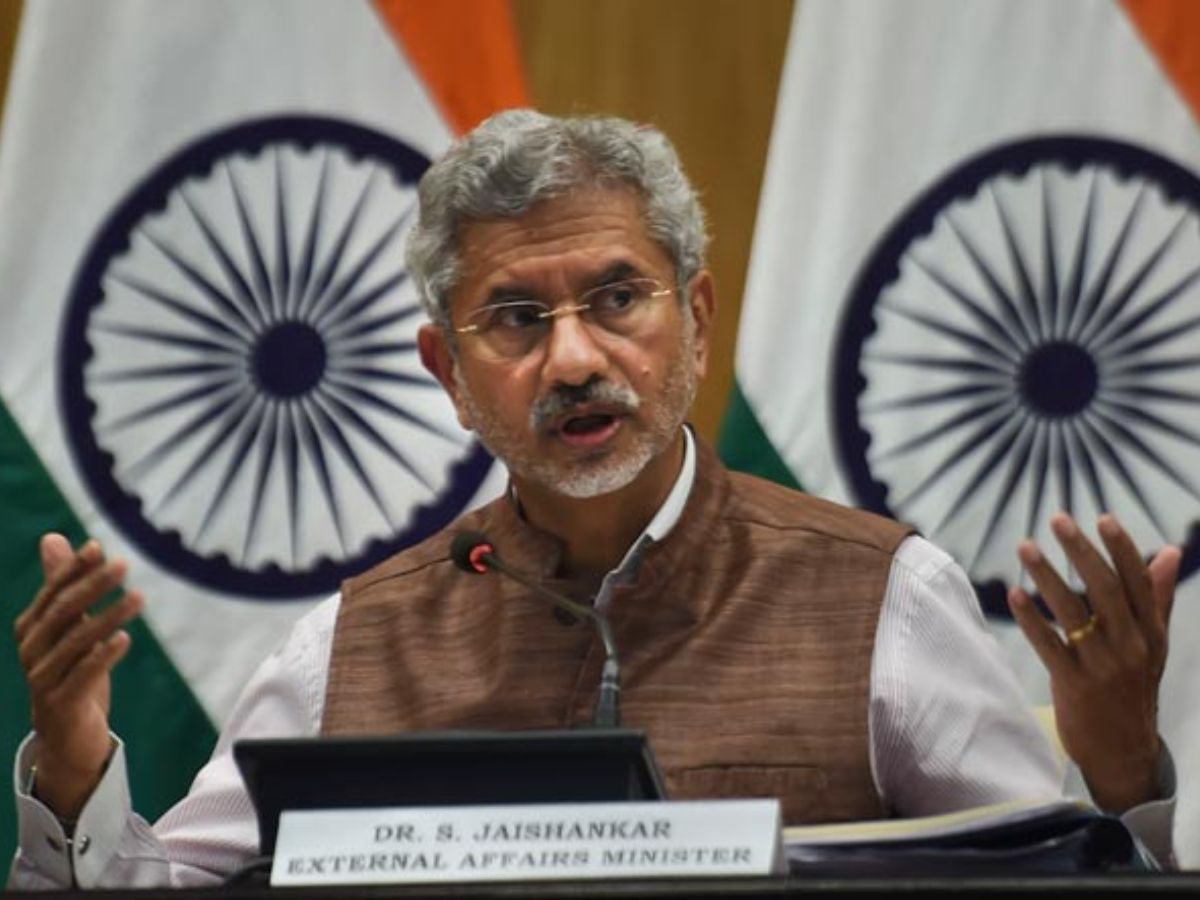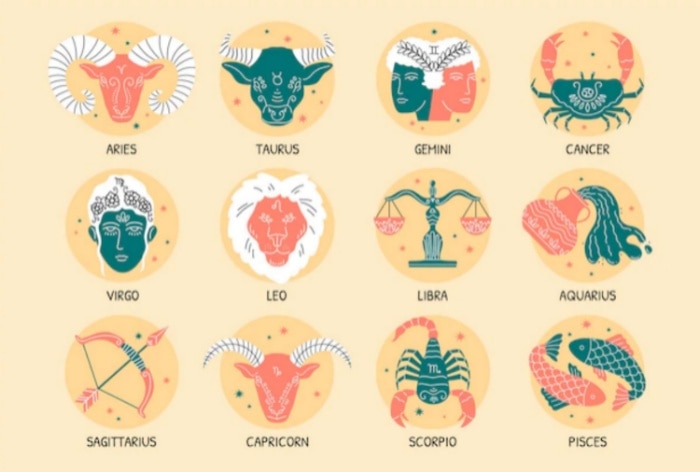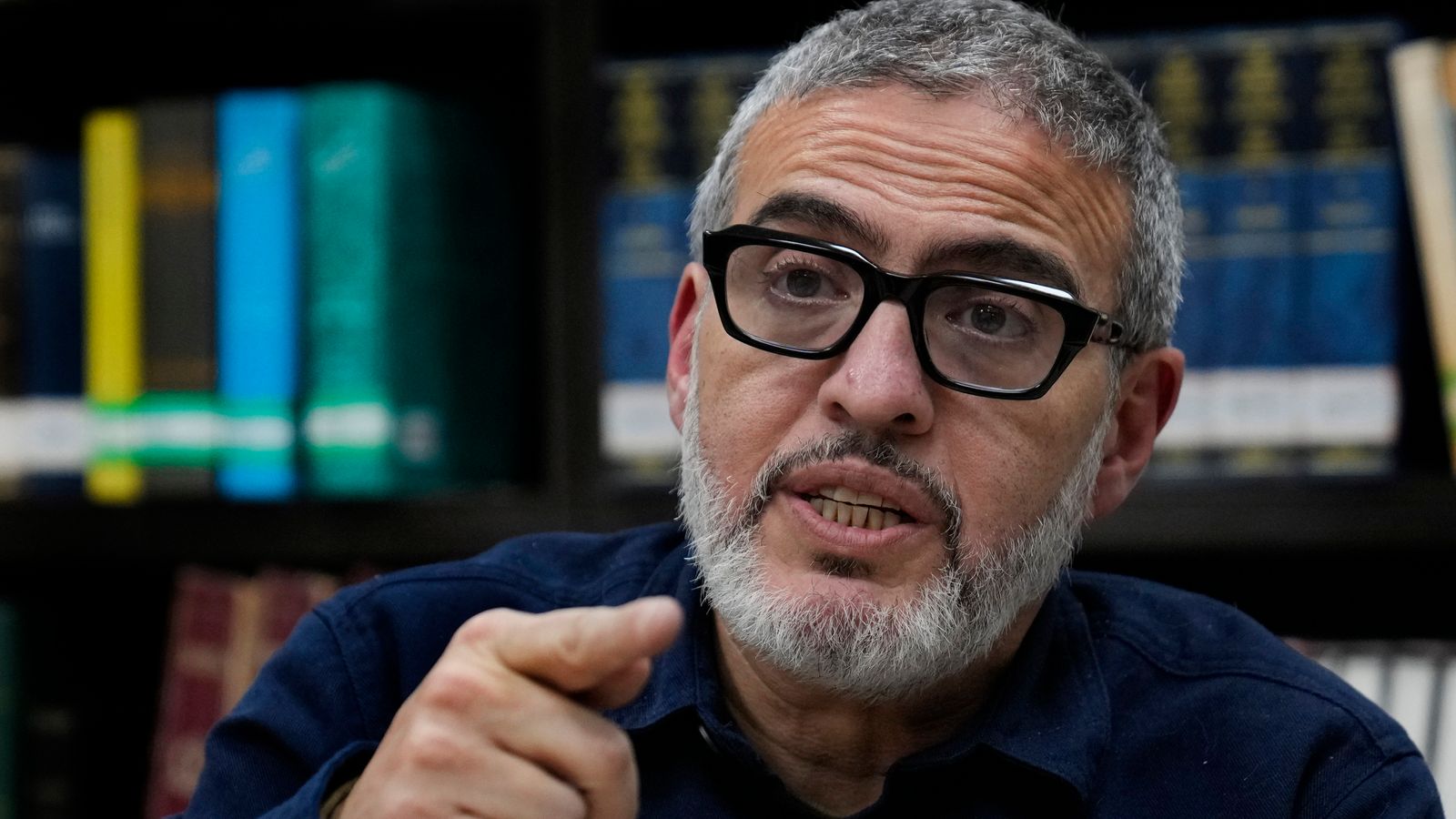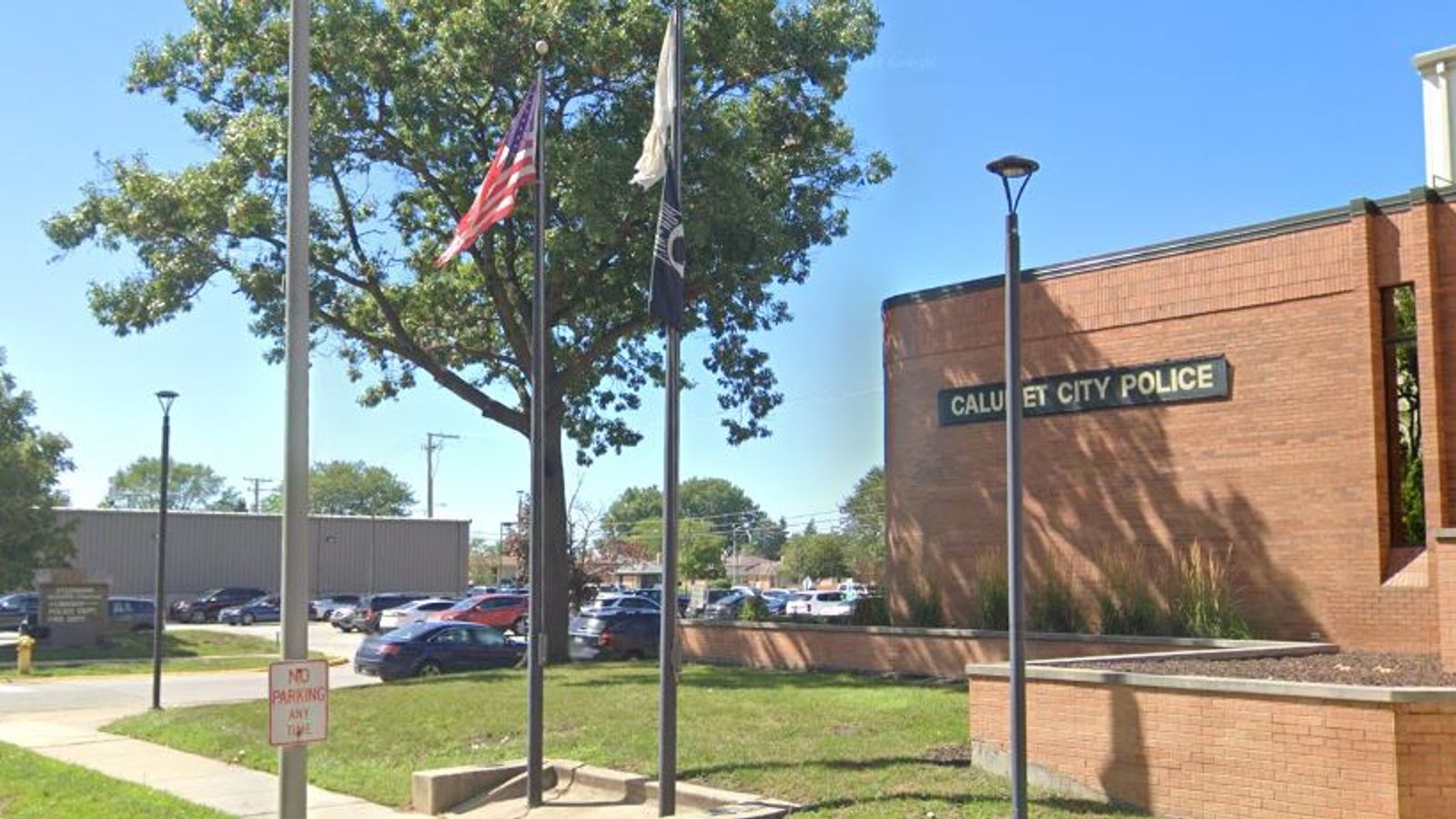Web Desk Updated: May 05, 2024 1:58 PM IST Situated in the Indian state of Uttarakhand, Tehri is a jewel among the mount...
Home EntertainmentSunny Deol Reveals His Family Witnessed the Ladder of Success in 2023 After Welcoming Daughter-in-Law:...
Home SportsCheteshwar Pujara Eyes India Return After Unbeaten Century For Sussex In County Championship This was Chetesh...
Home EntertainmentHeeramandi: Meet Jason Shah, British-Indian Actor Who Played Evil Cartwright in Sanjay Leela Bhansali’...
Home News‘We Will Have To Wait For…’ S Jaishankar Reacts To 3 Indians Being Arrested By Canadian Police In Hardeep Singh...
Home AstrologyAstrological Predictions For May 5, 2024: How Will Luck Favour Taurus And Gemini Today? Astrological Predi...
Home SportsFACT CHECK: Did Virat Kohli’s THIS Six Leave Anushka Sharma Stunned During RCB vs GT IPL 2024 Match? Anushka...
Home SportsPBKS vs CSK Dream11 Team Prediction, IPL 2024 Match 53: Punjab Kings vs Chennai Super Kings Fantasy Hints Cap...
Home SportsAnushka Sharma’s GOOFY Reaction After Virat Kohli Survives Runout During RCB vs GT IPL 2024 Match Goes VIRAL...
Home SportsVirat Kohli’s REMINDS Mohammed Siraj After Plan Against Shubman Gill Works During RCB vs GT IPL 2024 | VIRAL...
Home EntertainmentDid Shahid Kapoor’s Two Famous Exes Cheat on Him? Actor Spills the Beans in Viral Video – WATCH Shahid...
National News


Sunny Reveals His Family Witnessed the Ladder of Success in 2023 After Welcoming Daughter-in-Law

Cheteshwar Pujara Eyes India Return After Unbeaten Century For Sussex In County Championship

Heeramandi: Meet Jason Shah, British-Indian Actor Who Played Evil Cartwright in Sanjay Leela Bhansali’s Period Drama

‘We Will Have To Wait For…’ S Jaishankar Reacts To 3 Indians Being Arrested By Canadian Police In Hardeep Singh Nijjar Murder

Astrological Predictions: How Will Luck Favour Taurus Today?

FACT CHECK: Did Virat Kohli’s THIS Six Leave Anushka Sharma Stunned?

PBKS vs CSK Dream11 Team Prediction, IPL 2024 Match 53: All You Need to KNOW!

‘GOOD Charm’: Anushka’s GOOFY Reaction After Kohli Survives Runout BREAKS Internet!

KING For a Reason! Kohli’s ‘Bola Tha Na’ Gesture to Siraj After Plan vs Gill Works is GOLD!

Did Shahid Kapoor’s Two Famous Exes Cheat on Him? Actor Spills the Beans in Viral Video
Uttarakhand News
-

उत्तरकाशी के मनेरी झील में नौकायन का लुत्फ उठा पाएंगे श्रद्धालु
चारधाम यात्रा के साथ श्रद्धालु इस वर्ष तीर्थयात्री मनेरी में नौकायन का लुत्फ उठा पाएंगे। जिला साहसिक खेल प्रबंधन समिति...
-

सुगम और सुरक्षित चारधाम यात्रा के लिए पुलिस को अतिरिक्त सर्तकता बरतने के निर्देश
Instructions to police to exercise extra vigilance for smooth and safe Chardham Yatra
-

अति संवेदनशील है केदारनाथ पैदल मार्ग
प्रधानमंत्री नरेंद्र मोदी के ड्रीम प्रोजेक्ट के तहत बाबा केदार की नगरी केदारनाथ धाम को सुरक्षित करने के साथ ही सजाया और...
-

Olympus High Honors A+ Achievers
Olympus High Honors A+ Achievers
-

धरासू बैंड के पास आठ मई बंद होगी आवाजाही
यमुनोत्री हाईवे पर धरासू बैंड के पास भूस्खलन जोन के उपचार व मलबे को हटाने के लिए अगले पांच दिन आठ मई तक प्रतिदिन तीन बार...
-

Tula’s International School holds Confluence 2024
Tula's International School holds Confluence 2024
-

मसूरी में दर्दनाक हादसे में पांच छात्र-छात्राओं की मौत
Five students died in a tragic accident in Mussoorie
-

मुख्यमंत्री ने वनाग्नि, चारधाम यात्रा, पेयजल व विद्युत आपूर्ति को लेकर की महत्वपूर्ण बैठक
Chief Minister held an important meeting regarding forest fire, Chardham Yatra, drinking water and electricity supply.
-

देहरादून में भी कल से अवैध रूप से सड़क किनारे खड़े वाहनों के खिलाफ चलाया जाएगा अभियान
In Dehradun a campaign will be launched against vehicles parked illegally on the roadside.
-

Laser Run World Championship 2024 के लिए भी उत्तराखण्ड पुलिस ने क्वालीफ़ाई किया
Uttarakhand Police qualified for Laser Run World Championship 2024
-

चारधाम तीर्थयात्रियों के लिए बस किराया में वृद्धि
चारधाम यात्रा संयुक्त रोटेशन ने चारधाम यात्रा पर जाने वाले तीर्थयात्रियों के लिए नई किराया सूची जारी कर दी है। मालूम हो...
-

बड़े आंदोलन की तैयारी में शिक्षक
राजकीय शिक्षक संघ चुनाव आचार संहिता खत्म होने के बाद बड़े आंदोलन की तैयारी में हैं। लंबित मांगों पर अमल न होने से नाराज...
World News
-

Israel’s Benjamin Netanyahu rejects ceasefire deal that would ‘leave Hamas intact’
Israeli Prime Minister Benjamin Netanyahu has rejected ceasefire proposals because he says Hamas's call for a withdrawal...
-

Olly Alexander addresses ‘extreme’ remarks from fans on Israel’s Eurovision inclusion
The UK's Eurovision Song Contest representative has addressed "extreme" remarks from fans over Israel's inclusion in the...
-

What is the Barbara Rhubarb dance and how did it turn into a TikTok trend?
You may have noticed an unusual German rap song in the background of an increasing number of videos on your TikTok feed....
-

Perth police shoot dead boy, 16, after possible terrorist stabbing in car park
Police have shot dead a 16-year-old boy after he stabbed a man in the back in Australia in a possible terrorist attack.T...
-

Progress reported in Gaza ceasefire talks – but Israel plays down end to war
An Israeli official has downplayed the prospects for a full end to the war in Gaza as Egyptian state media reported "not...
-

British-Palestinian surgeon Ghassan Abu Sitta says French authorities denied him entry
A British-Palestinian plastic surgeon who has been operating on injured civilians in Gaza says he has been denied entry...
-

Man, 79, charged over 1966 Illinois murder after DNA breakthrough
A 79-year-old man has been charged with murder of an 18-year-old woman who was stabbed more than 120 times in her suburb...
-

Bodies found in search for Australian brothers and US man missing on Mexico surfing trip
Bodies have been found in the search for two Australian brothers and a US tourist who went missing in northern Mexico.Th...
-

India and Canada relations at their lowest ever in wake of Sikh leader Hardeep Nijjar’s killing
Diplomatic relations between India and Canada have been at their lowest since Prime Minister Justin Trudeau responded to...
-

Health warning issued as heatwave grips South and Southeast Asia
Countries in South and Southeast Asia have been coping with a weeks-long heatwave which has seen record temperatures swe...
-

Philippine coastguard hits out at China’s ‘brute force’ after water cannon attack
China has been branded "a bully" and an international lawbreaker after its ships blasted Philippine vessels with water c...
-

Dozens dead and roads turned into rivers as Brazil hit by record-breaking floods
Heavy rains in southern Brazil have killed 37 people, local authorities have said, with dozens still unaccounted for.Mor...
Sports News
-

IPL 2024: Match 55, MI vs SRH Match Prediction: Who will win today’s IPL match? – CricTracker
Mumbai Indians, currently languishing at the bottom of the pile, take on the Sunrisers Hyderabad on May 06 at the Wankhe...
-

IPL 2024: Faf du Plessis wants RCB to keep momentum going after hat-trick of wins
Royal Challengers Bengaluru (RCB) made it a hat-trick of wins in IPL 2024 on Saturday night and skipper Faf du Plessis w...
-

RCB are off the ventilator but still in the ICU: Ajay Jadeja
The Royal Challengers Bengaluru (RCB) picked up their fourth win of the IPL 2024 by defeating the Gujarat Titans (GT) by...
-

Heinrich Klaasen loses cool after being mobbed by fans in shopping mall, video goes viral
Heinrich Klaasen and Jaydev Unadkat visited a shopping mall amid the exhausting cricket schedule but it turned out to be...
-

LSG vs KKR IPL Records & Stats at Ekana Cricket Stadium, Lucknow – CricTracker
Third-placed Lucknow Super Giants (LSG) will be hosting the second-placed Kolkata Knight Riders (KKR) in Match 54 of the...
-

Lucknow vs Kolkata, Match 54: LKN vs KOL MPL Opinio Today’s Prediction – Who will win? – CricTracker
PreviewLucknow (LKN) will take on Kolkata (KOL) in the 54th match of the Indian T20 League 2024 on Sunday (May 5) at the...
-

IPL 2024: 3 changes GT should make to get back to winning ways
Bengaluru's Chinnaswamy Stadium was expected to produce a high-scoring thriller, but it turned out to be a one-sided low...
-

What is Joshua Little’s salary in IPL 2024?
Joshua Little bowled a good spell for GT in the latest match against RCB. The Irish pacer claimed four important wickets...
-

IPL 2024: Gujarat Titans 1st innings highlights against RCB in Match 52
Faf Du Plessis and his Royal Challengers Bengaluru side came into the game high on confidence having won their last two...
Trending Business News
-

This multi bagger stock company announces 215% dividend
J&K Bank dividend: Jammu and Kashmir Bank reported its fourth-quarter results on Saturday (May 4). Along with the Q4...
-

7350% dividend in Q4: FMCG major Britannia Industries announces Rs 73.5 dividend
The board of directors of FMCG major Britannia on Friday, May 3, recommended a final dividend of Rs 73.5 per equity shar...
-

Paytm President, COO Bhavesh Gupta to resign
Digital payments firm Paytm, formally known as One97 Communications Ltd (OCL), said on Saturday its President and Chief...
-

Birla Corp Q4 Results: Net profit up by 127% to Rs 193 crore
Birla Corp Q4 Results: Cement major Birla Corporation Ltd announced a sharp jump in its consolidated net profit to Rs 19...
-

Avenue Supermarts Q4 Results: Net profit rises 22.39% to Rs 563 crore
Avenue Supermarts Q4 Results: Avenue Supermarts Ltd, which owns and operates D-Mart stores, on Saturday reported a 22.39...
-

Volkswagen strengthens retail footprint with new store in Tamil Nadu
German automaker Volkswagen has inaugurated a new store in the city under its expansion drive in the state, strengthenin...
-

JK Bank Q4 Results: Jammu and Kashmir Bank reports highest-ever annual profit of Rs 1,767 crore
JK Bank Q4 Results: Jammu and Kashmir Bank on Saturday reported its highest-ever annual profit at Rs 1,767 crore for 202...
-

CDSL Q4 Results: Net profit doubles to Rs 129 crore
CDSL Q4 Results: Leading depository CDSL on Saturday said its net profit doubled to Rs 129 crore for the three months en...
-

IDBI Bank Q4 Results: Net profit jumps 44% to Rs 1,628 crore
IDBI Bank Q4 Results: Private sector lender IDBI Bank on Saturday reported a 44 per cent jump in net profit at Rs 1,628...
-

Tata Power Renewable Energy signs pact with SJVN for 460 MW clean energy project
Tata Power Renewable Energy Ltd (TPREL) on Saturday said it has signed an agreement with state-owned SJVN Ltd to set up...
-

Paper industry urges govt to allot degraded land for pulpwood plantation
The Indian paper industry has urged the government to provide degraded land on a long-term lease to paper mills for pulp...
-

Over 80,000 tech employees lost jobs globally in first four months this year in 279 firms: Report
More than 80,000 employees in the technology sector have lost jobs in the first four months this year, and layoffs conti...
Entertainment
-

चिलचिलाती गर्मी में चाचू अयान मुखर्जी संग चिल करती दिखीं राहा, देखे वीडियो – India TV Hindi
Image Source : INSTAGRAM राहा कपूर-अयान मुखर्जी बॉलीवुड अभिनेता रणबीर कपूर के दोस्त और निर्देशक अयान मुखर्जी दोनों सालों...
-

बीच कॉन्सर्ट में सुनिधि चौहान पर फेंकी बोतल, सिंगर ने ऐसे दिया करारा जवाब – India TV Hindi
Image Source : INSTAGRAM सुनिधि चौहान भारत की सबसे पसंदीदा सिंगर में से एक सुनिधि चौहान को लेकर एक परेशान कर देने वाली ख...
-

रणबीर-आलिया संग वरुण धवन के घर पहुंची राहा, क्यूटनेस पर फिदा हुए फैंस – India TV Hindi
Image Source : INSTAGRAM राहा कपूर रणबीर कपूर और आलिया भट्ट बॉलीवुड के सबसे प्यारे कपल में से एक हैं और उनकी बेटी राहा क...
-

वरुण धवन-जाह्नवी कपूर ने शुरू की ‘सनी संस्कारी की तुलसी कुमारी’ की शूटिंग – India TV Hindi
Image Source : INSTAGRAM वरुण धवन-जाह्नवी कपूर वरुण धवन और जाह्नवी कपूर दूसरी बार पर्दे पर साथ नजर आने के लिए तैयार हैं।...
-

बेटे अकाय के जन्म के बाद पहली बार मैच देखने पहुंची अनुष्का शर्मा – India TV Hindi
Image Source : X अकाय के बाद पहली बार मैच देखने पहुंची अनुष्का अनुष्का शर्मा और विराट कोहली अपने-अपने क्षेत्र, बॉलीवुड औ...
-

‘इंटरनेशनल फायर फाइटर्स डे’ पर एक्सेल एंटरटेनमेंट ने किया फिल्म ‘अग्नि’ का एलान – India TV Hindi
Image Source : X फायर फाइटर्स डे पर हुई नई फिल्म की घोषणा आज 'इंटरनेशनल फायर फाइटर्स डे' है। इस खास मौके पर फरहान अख्तर...
-

करीना कपूर को मिली बड़ी जिम्मेदारी, UNICEF ने बनाया नेशनल एंबेसडर तो हुईं इमोशनल – India TV Hindi
Image Source : X करीना बनीं यूनिसेफ की एंबेसडर करीना कपूर खान अक्सर अपनी फिल्मों को लेकर चर्चा में बनी रहती हैं। इसके सा...
-

‘भैयाजी’ के नए लुक में मनोज बाजपेयी को देख खड़े हो जाएंगे रोंगटे – India TV Hindi
Image Source : X 'भैयाजी' का नया पोस्टर रिलीज 'द फैमिली मैन','सत्या','गैंग्स ऑफ वासेपुर' जैसी कई फिल्मों में नजर आए मनोज...
-

धर्मेंद्र ने इशारों-इशारों में कह दी इतनी बड़ी बात, न जाने किस पर कसा तंज – India TV Hindi
Image Source : X धर्मेंद्र ने शेयर किया क्रिप्टिक पोस्ट धर्मेंद्र ने बॉलीवुड में एक लंबा और सक्सेसफुल करियर देखा है। अब...
Technology News
-

India emerged as the most preferred market for tech giants: Apple CEO Tim Cook
India has become a key market for global tech giants, with a burgeoning developer base attracting significant attention....
-

IBM expands software availability to 92 countries in AWS Marketplace, including India
IBM has announced an expansion in the availability of its software portfolio, making it accessible in 92 countries throu...
-

Elon Musk’s X cracks down on deepfakes with improved image matching
Tesla and SpaceX CEO Elon Musk, on Saturday, said that a new update on "improved image matching" will defeat deepfakes a...
-

Indian Bike Driving 3D Cheat Codes May 2024 List
Indian Bikes Driving 3D is a popular Android game which is a spinoff of the GTA franchise. The game brings all the eleme...
-

Understanding Peer-to-Peer Crypto Trading: Benefits and Threats
When two individuals or entities decide to exchange any asset directly between each other, this process is referred to a...
-

AMD set to fuel growing demand for AI compute, says CTO
Chipmaker AMD is poised to power the surging demand for AI compute with its wide range of product portfolio, the company...
-

HCL Tech, Cisco launch ‘Pervasive Wireless Mobility as-a-Service’ for secured connectivity across enterprises
"HCLTech and Cisco launch Pervasive Wireless Mobility as-a-Service...This brings secure and mission critical connectivit...
-

Amazon Great Summer Sale: iPhone 15, iPhone 14 Listed With Discounts
Amazon Great Summer Sale 2024 is currently live for all shoppers after giving 12 hours of early access exclusively to Pr...
-

Best Smart TV Deals Under Rs. 30,000 During Amazon Great Summer Sale 2024
Amazon Great Summer Sale 2024 kicked off in India at 12am IST on May 2 for Amazon Prime members and is now accessible to...
-

Poco X6 5G Launched in a Third Colour Option in India: See Price
Poco X6 5G is now available in a new colour option in India. The smartphone was launched in the country in January this...
-

Amazon Great Summer Sale Begins: Best Offers Today
Amazon Great Summer Sale 2024 is now live for Prime members. The sale will open up for everyone else starting 12PM on Ma...
Know about online
-

India emerged as the most preferred market for tech giants: Apple CEO Tim Cook
India has become a key market for global tech giants, with a burgeoning developer base attracting significant attention....
-

IBM expands software availability to 92 countries in AWS Marketplace, including India
IBM has announced an expansion in the availability of its software portfolio, making it accessible in 92 countries throu...
-

Elon Musk’s X cracks down on deepfakes with improved image matching
Tesla and SpaceX CEO Elon Musk, on Saturday, said that a new update on "improved image matching" will defeat deepfakes a...
-

Indian Bike Driving 3D Cheat Codes May 2024 List
Indian Bikes Driving 3D is a popular Android game which is a spinoff of the GTA franchise. The game brings all the eleme...
-

Understanding Peer-to-Peer Crypto Trading: Benefits and Threats
When two individuals or entities decide to exchange any asset directly between each other, this process is referred to a...
-

AMD set to fuel growing demand for AI compute, says CTO
Chipmaker AMD is poised to power the surging demand for AI compute with its wide range of product portfolio, the company...








